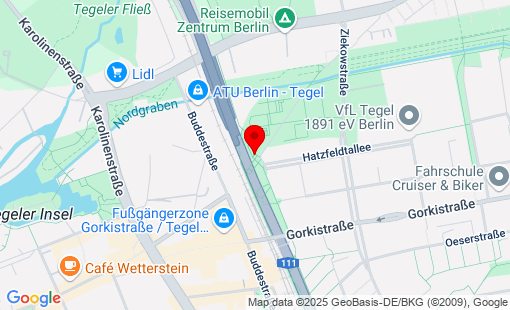Germany
Berlin-Reinickendorf, Friedhof Tegel
Total Occupation: 109 fatalities
Total Occupation: 109 fatalities
The state-owned Tegel cemetery "Am Nordgraben" was opened in 1875 as the Tegel municipal cemetery outside the village on the former Hermsdorfer Weg. Two years earlier, the royal government in Potsdam had given the municipality of Tegel permission to build a new cemetery on an area of around 2 hectares due to the high population growth: 591 people lived in Tegel in 1871 and 1,267 by 1875. The village of Tegel itself was first mentioned in a document in 1322. The first recorded burial took place on March 4, 1877. The cemetery chapel dates back to 1900, a hall building in the style of Mark Brandenburg brick Gothic with a polygonal apse. The cemetery was extended in 1905, 1932 and 1956; parts were again deconsecrated in 1977 and 1983, either for track construction or the construction of a freeway feeder road. The current size is 3.6 ha. The cemetery contains the following honorary graves of the State of Berlin: - Herbert Bauer, 1925-1952, Chief Constable: he died on 25.12.1952 in a firefight between Soviet soldiers and West Berlin police officers who had invaded Frohnau; wilhelm Blume, 1884-1970, reform educator and founder of the Scharfenberg Island school farm - Adolf Dünnebacke, 1891-1978, politician and town elder - Franz Neumann, 1904-1974, politician and Nazi resistance fighter - Grete Sonnemann, 1903-1990, politician and Nazi resistance fighter The cemetery contains 70 individual graves and a collective grave of 16 m² with victims of the Second World War. In March 1920, four Tegel workers who died in the fighting during the Kapp Putsch were buried near the memorial stone for the fallen of the First World War. (Martin Bayer, 30.04.2020)
